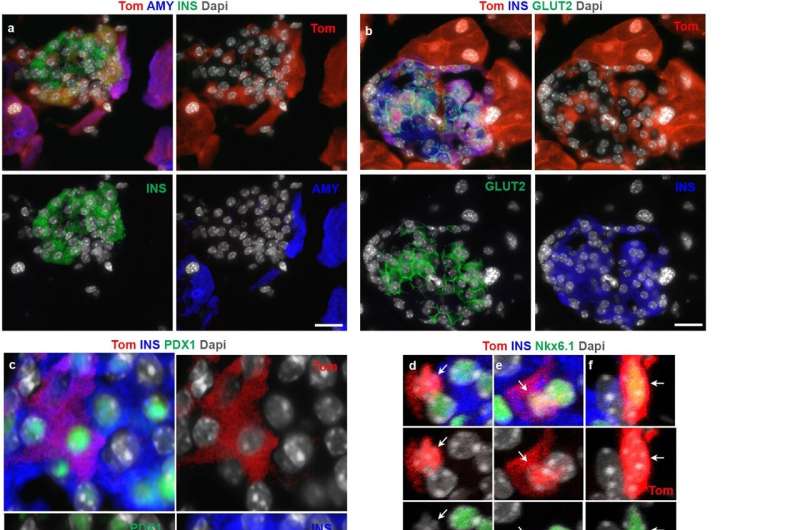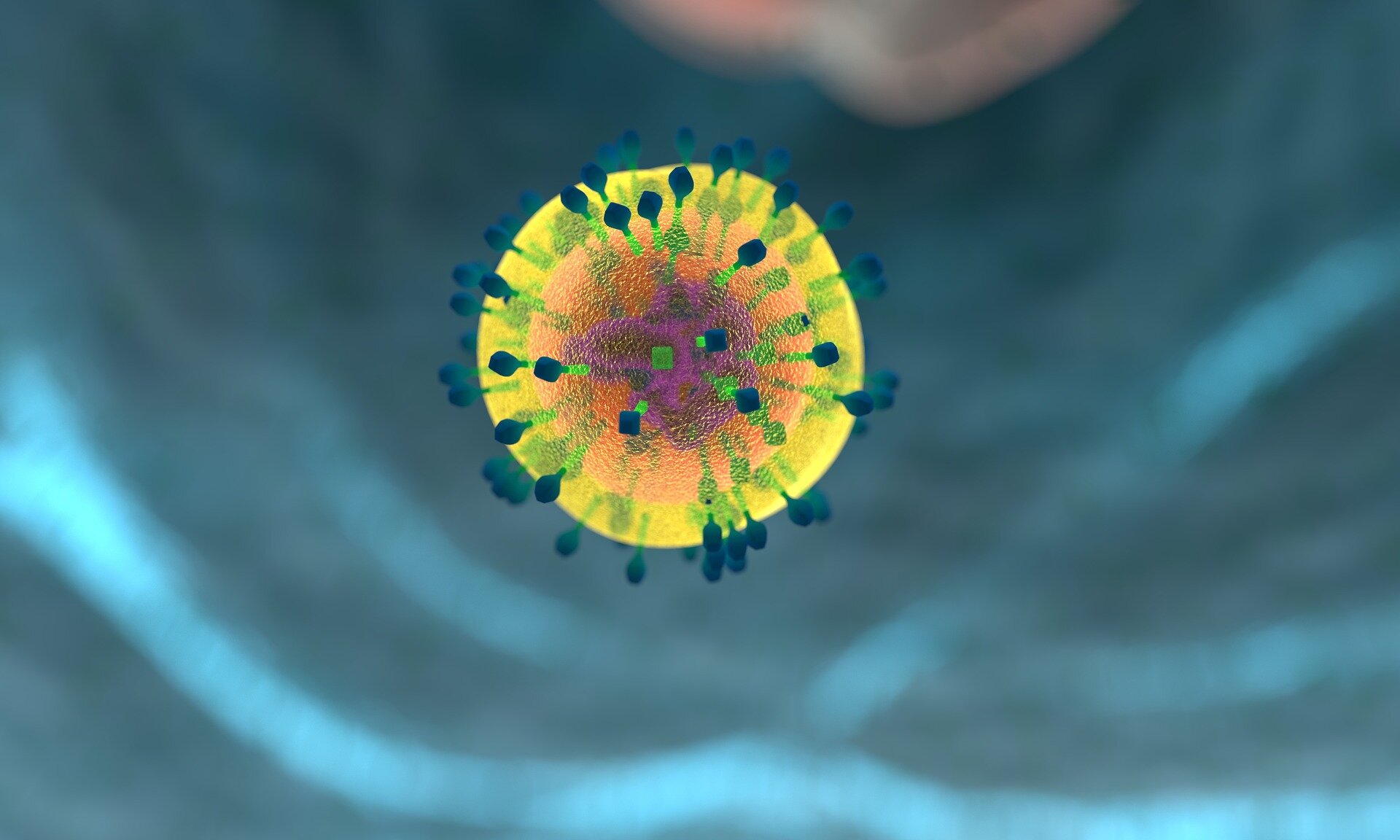
In 2016, College of Pittsburgh researchers Dr. Farzad Esni, Ph.D., and Jing Hu, Ph.D., did an experiment in mice the place they deleted one in every of two copies of the gene encoding an enzyme referred to as focal adhesion kinase (FAK). They had been within the function of FAK in pancreatic most cancers, however a shock discovering took the analysis in a really totally different route.
“The pancreas seemed bizarre, nearly prefer it was attempting to regenerate after an harm,” mentioned Esni, affiliate professor of surgical procedure at Pitt and member of UPMC Hillman Most cancers Middle and the McGowan Institute for Regenerative Medication.
Even weirder, a cluster of cells within the pancreas had been expressing each insulin and amylase. In regular mice and people, the blood sugar-regulating hormone insulin is produced by beta cells, whereas amylase, a digestive enzyme, is manufactured by acinar cells. The features of acinar and beta-cells are very distinct, so it did not make sense that the cluster of cells seemed like a mix of the 2.
“There have been three potential explanations for what we noticed within the mutant mice,” mentioned Esni. “It may have simply been an artifact of our experiment, beta cells may have began making amylase or acinar cells may have began producing insulin—which might be the holy grail.”
Esni and his crew had in actual fact stumbled upon this holy grail. In a brand new Nature Communications paper, the researchers present {that a} FAK-inhibiting drug, which has been studied in most cancers therapy, transformed acinar cells into acinar-derived insulin-producing (ADIP) cells and helped regulate blood glucose in diabetic mice and a single non-human primate.
The findings counsel that FAK inhibitors could possibly be a brand new avenue as a substitute for insulin remedy in diabetic sufferers. With out sufficient insulin, sufferers with diabetes are in danger for hyperglycemia, or excessive blood sugar, which might injury blood vessels and organs and result in coronary heart assaults, stroke and different severe problems.
To analyze the consequences of ADIP cells in an animal mannequin of diabetes, the researchers partially or utterly worn out the animals’ beta cells with a low or excessive dose of a compound referred to as streptozotocin, mimicking diabetes. Then they handled the mice with a 3-week course of an oral FAK-inhibiting drug referred to as PF562271 or placebo.
The FAK inhibitor-treated mice regained about 30% of their authentic beta cell mass, and the therapy partially improved hyperglycemia. These outcomes continued till the top of the experiment a number of weeks later, suggesting {that a} one-time therapy might have long-term advantages for diabetes management.
The crew additionally examined the consequences of FAK inhibitor in a single non-human primate. After 4 macaques acquired diabetes-inducing streptozotocin, they required 5 to twenty items of insulin per day to handle their blood glucose. Subsequent, the researchers handled one in every of these diabetic macaques with a 3-week course of FAK inhibitor. Six weeks later, the animal’s insulin necessities decreased by 60%, a secure enchancment that continued with out further therapy till the top of the experiment 4 months later.
The thought of nudging acinar cells to provide insulin is not new, however FAK inhibitors might have a smoother translational path than genetic approaches as a result of the drug has already been examined in part 1 most cancers trials. It is also given orally, which is easier than sophisticated genetic instruments that contain viral supply of overseas genes or genetic elements that swap on genes.
“Functionally, ADIP cells ought to be much like insulin-producing cells derived from acinar cells in different research, however an essential distinction is that our cells really infiltrated pre-existing pancreatic islets, the place beta cells usually reside,” mentioned Esni. “Our cells can reap the benefits of the islet atmosphere, the place they’ve entry to blood vessels for glucose monitoring, which makes them rather more potent.”
With the eventual hope of launching a medical trial to check FAK inhibitor in diabetes sufferers, Esni and his crew are actually planning long-term experiments in mice to have a look at the period of hyperglycemia management after a single course of the drug in mouse fashions for sort 1 or sort 2 diabetes. They’re additionally investigating the consequences of FAK inhibition in pancreatic tissues from human donors.
Extra data:
Shakti Dahiya et al, Acinar to β-like cell conversion by inhibition of focal adhesion kinase, Nature Communications (2024). DOI: 10.1038/s41467-024-47972-4
College of Pittsburgh
Quotation:
Repurposed most cancers drug may deal with diabetes by nudging pancreatic acinar cells to provide insulin (2024, Could 6)
retrieved 6 Could 2024
from
This doc is topic to copyright. Other than any honest dealing for the aim of personal examine or analysis, no
half could also be reproduced with out the written permission. The content material is supplied for data functions solely.







